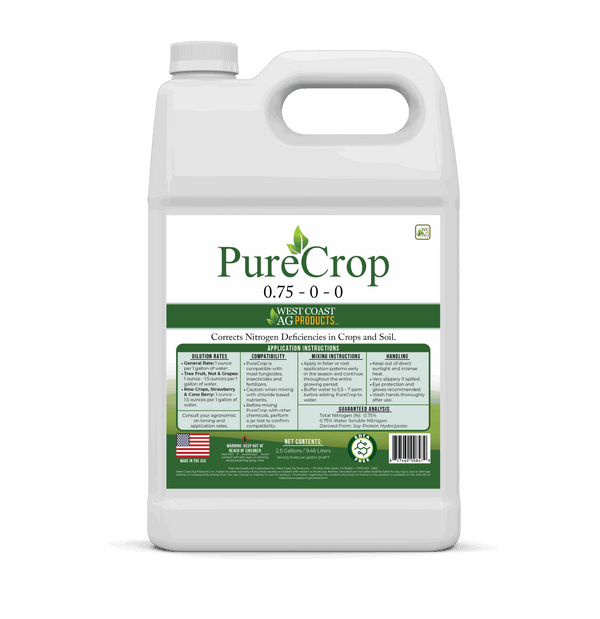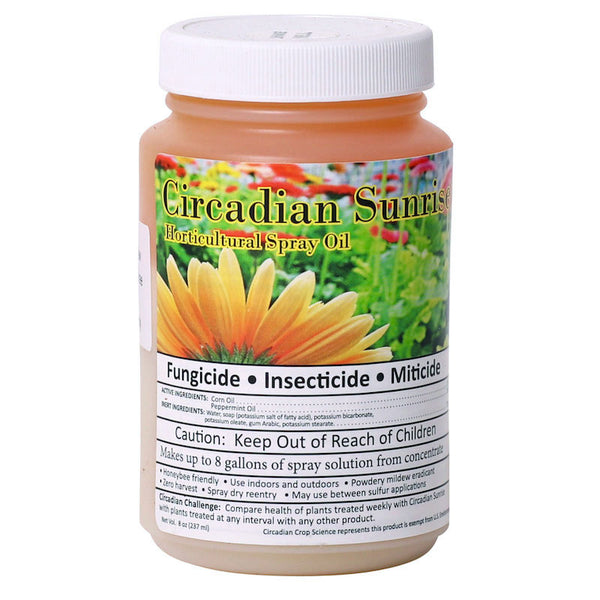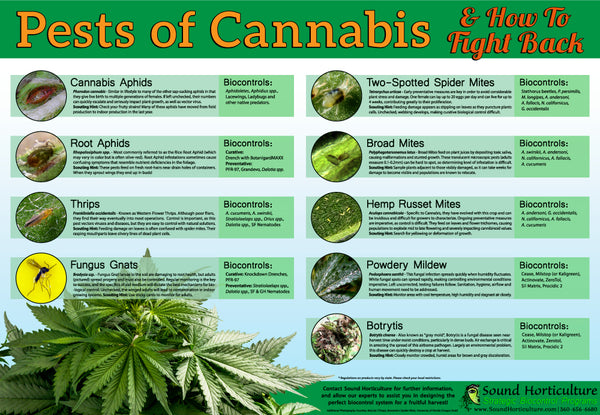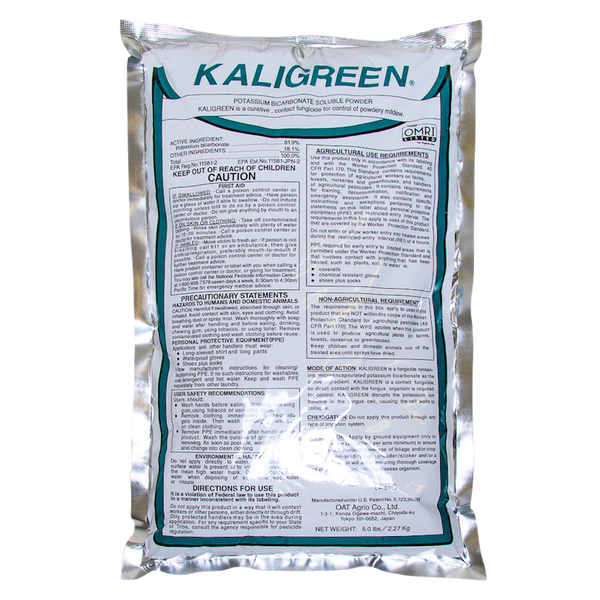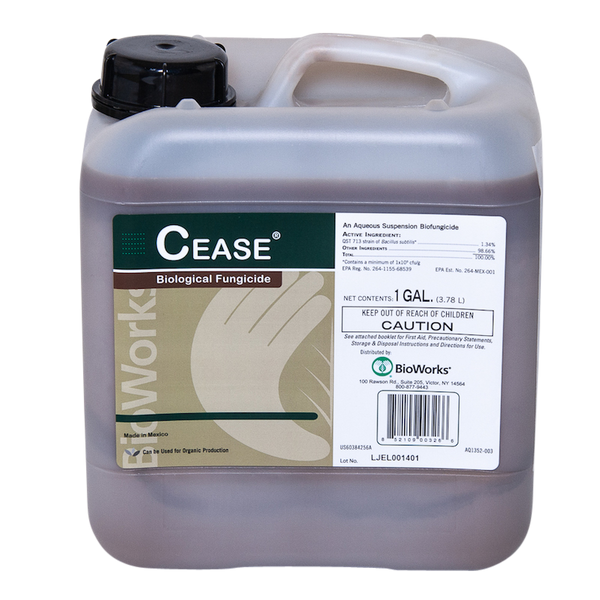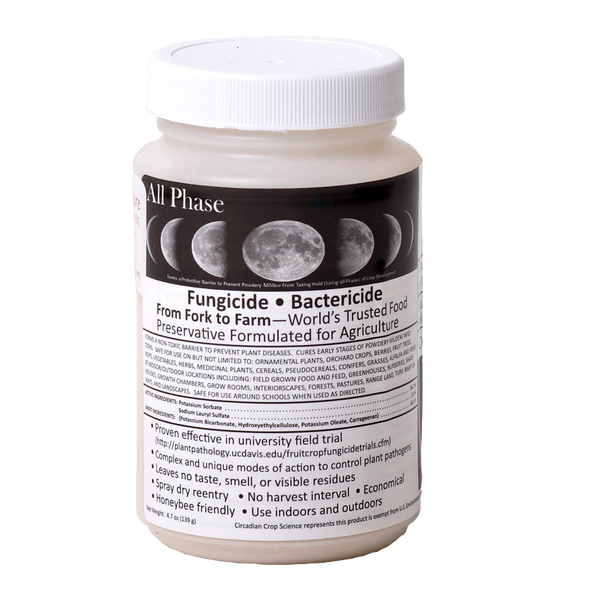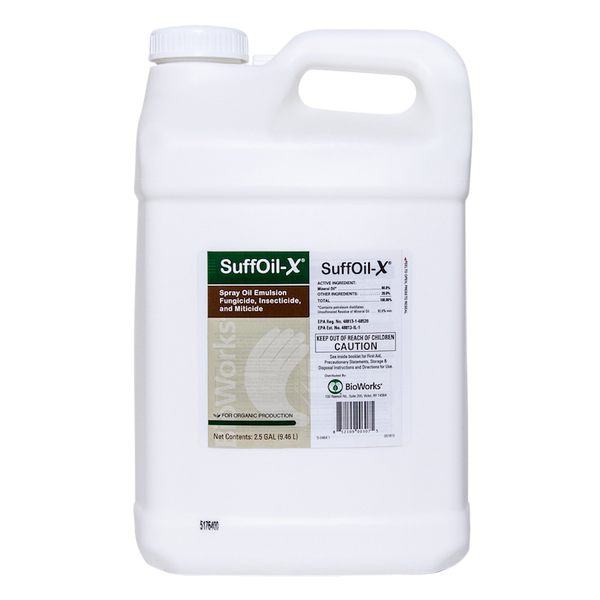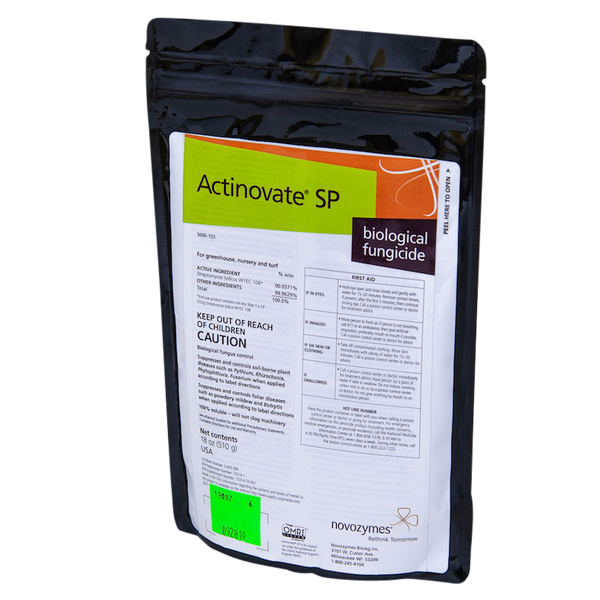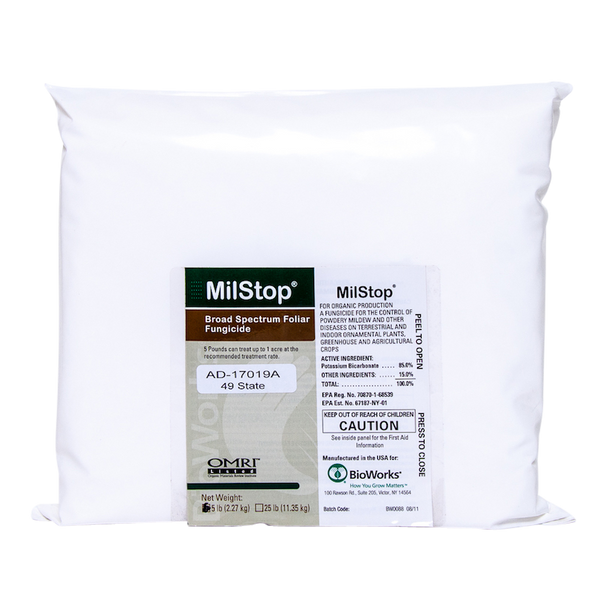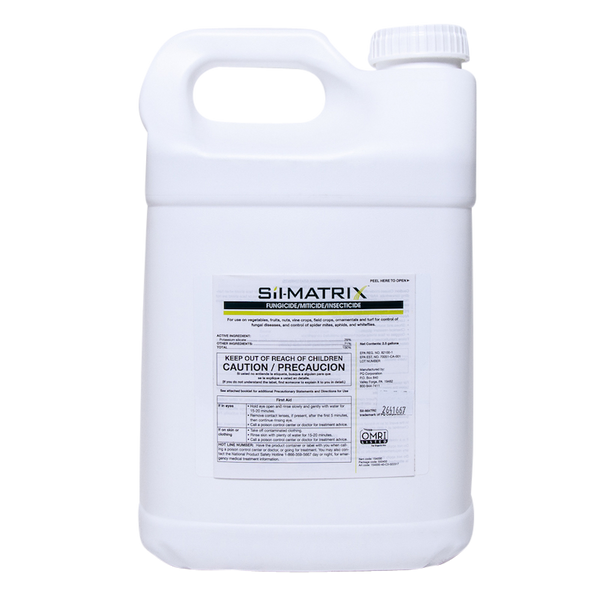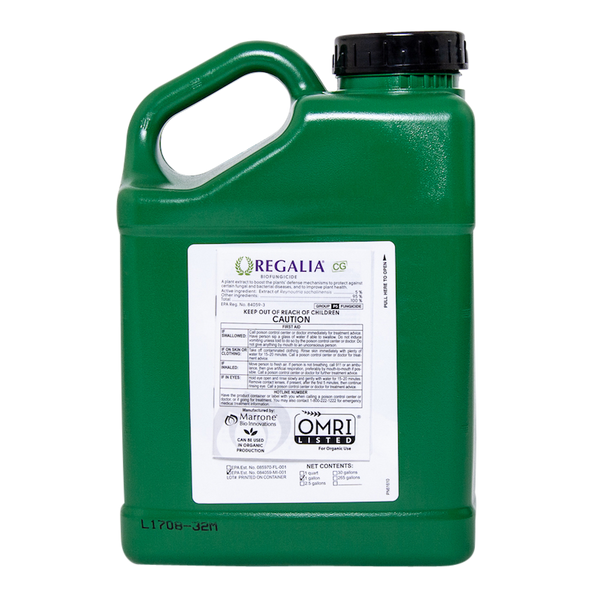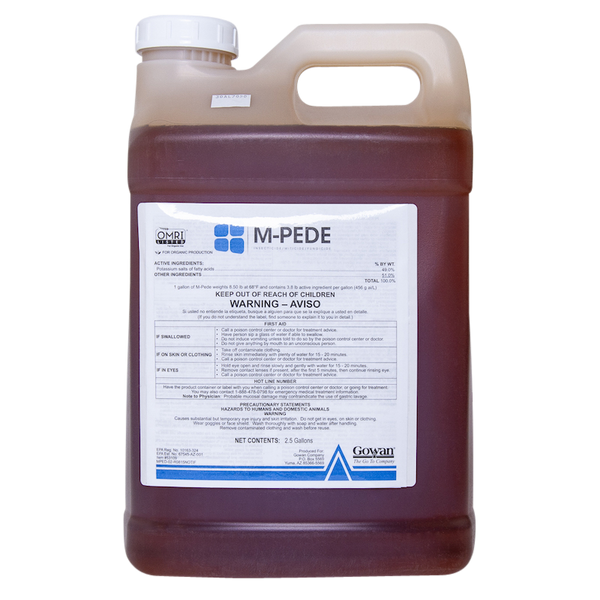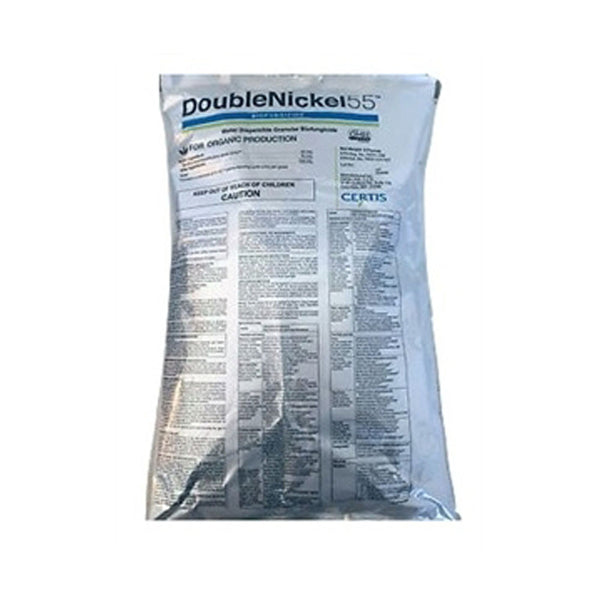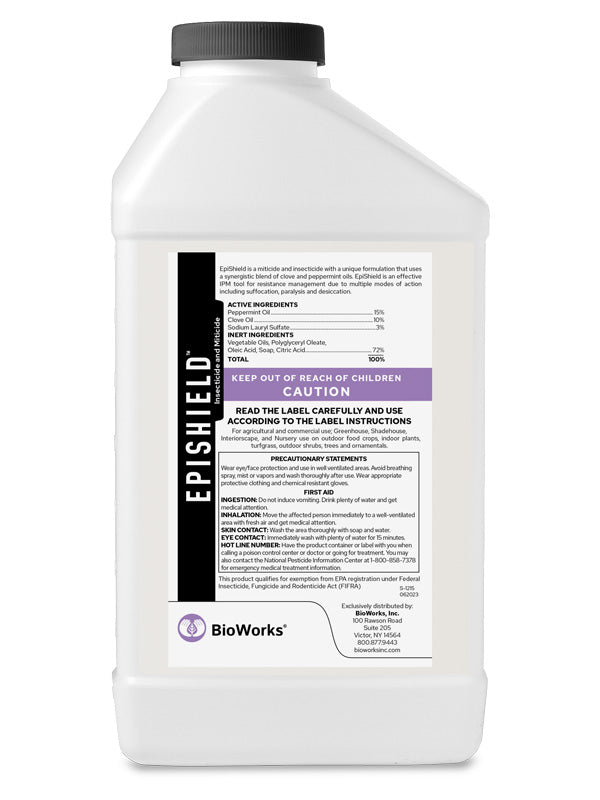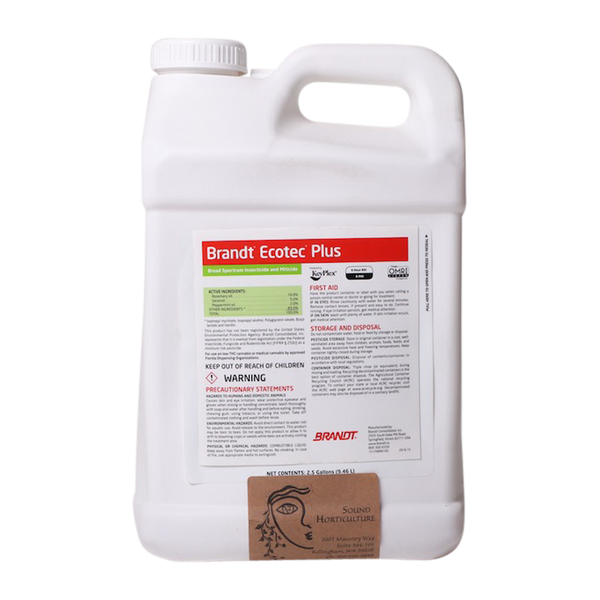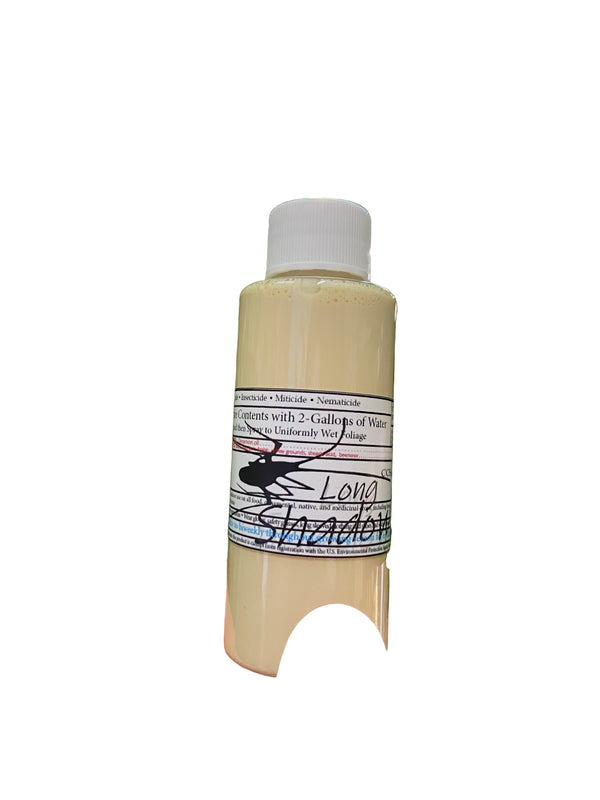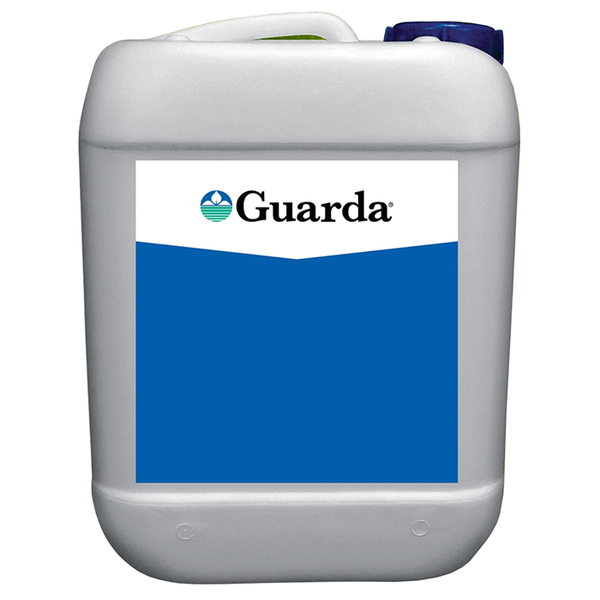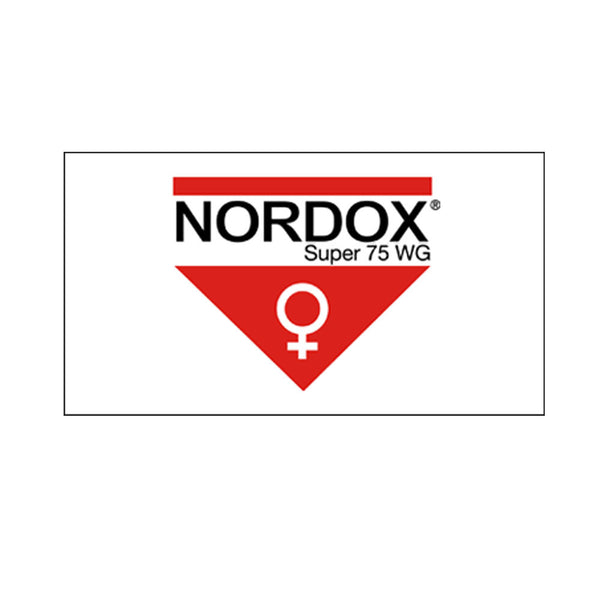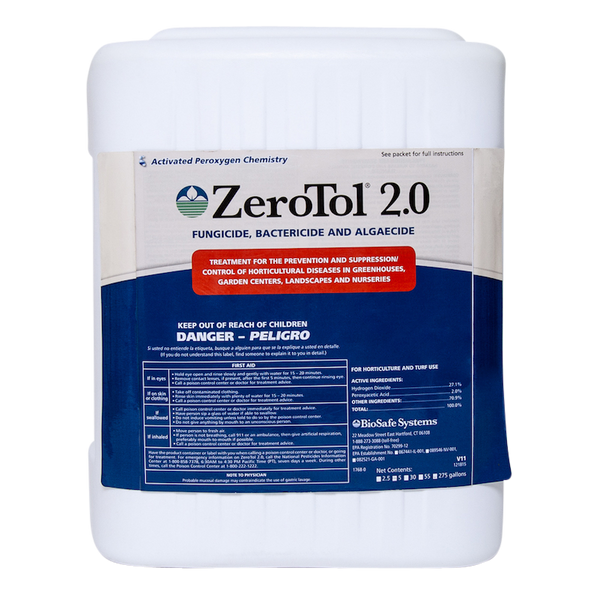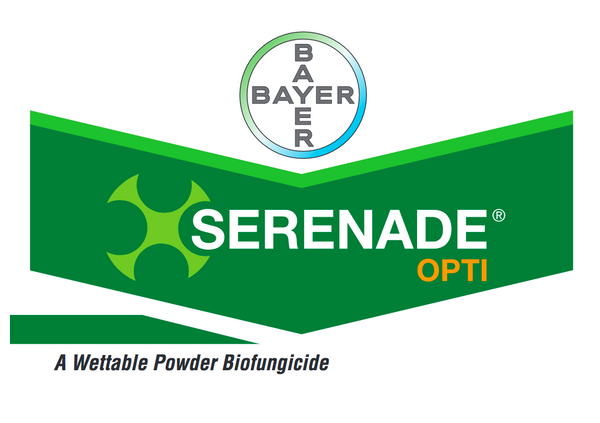Powdery Mildew Control
Shop Below for Powdery Mildew Control
Powdery mildews are among the world’s most universal pathogenic fungi. Powdery mildew occurs with high humidity, cool nights, and warm days. Symptoms start with pale yellow leaf spots, irregular chlorotic or necrotic lesions, then white powdery spots on upper and lower leaf surfaces. Fruit ripens prematurely, leaf shriveling, distorted new shoots and stunted growth.
Spores are easily spread by wind and germination can occur with high relative humidity. Damp shaded areas with low air circulation are most susceptible to powdery mildew infection. Spores can overwinter on leaves, bark or debris until temperatures warm up in spring. Powdery mildew fungi are different from other fungal pathogens. For example, powdery mildew spores do not need free water on plant surfaces to germinate; free water may even kill spores and inhibit disease development.
Powdery mildew uses fungal structures to breach the cell wall of the plant, extracting nutrients that will then be used to further spread the disease through hyphal growth and spore generation. Symptoms include leaf distortions such as curling, twisting, and discoloration, lowered vigor and growth of the host. Yellow or brown discoloration can also be signs of powdery mildew, even when white patches aren't discernible. In succulents light or dark brown scabby lesions, bumps or spots can be a warning of powdery mildew infection. Symptoms will be expressed in different ways based on the host, but white patches are most common.
Susceptible crops are asters, coreopsis, rudbeckia, roses, African violets, delphinium, monarda, verbena, poinsettia, hydrangea, phlox and begonia, to name a few. This is different from Downy Mildew which appears on the underside of leaves. Please contact Sound Horticulture if you have this issue.
Control for powdery mildew is greatly enhanced with sound cultural practices. Rogue infected plants or prune out diseased tissue. Good air circulation and proper plant spacing will decrease relative humidity. Growing resistant cultivars can go a long way in stopping the spread of this disease. Prevention is key. Rotating biological fungicides like Cease or using a Potassium bicarbonate based product such as Milstop can keep this fungus as bay. Other products are Guarda, Stargus, Actinovate, Regalia, All Phase, Serenade, or Double Nickel. Armory can help increase plant vigor.
Visit the UC IPM article on Powdery Mildew for more information.


